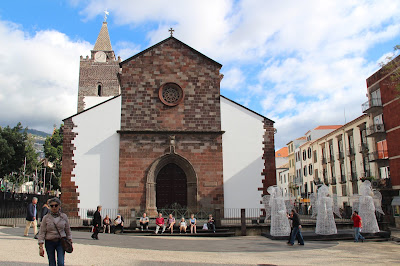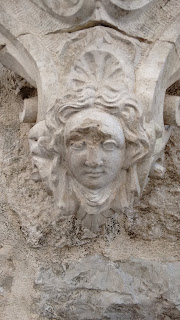Madeira
Quinta
do Lorde 4-15 December 2017
Having
enjoyed the Azores in 2011, we had high hopes for our visit to Madeira; albeit
a winter arrival that we could do little about.
Funchal was lively and its mild climate attracted those visitors wishing
to escape Europe’s chilly December snowfalls.
Christmas celebrations were in full swing and there was much to occupy
our time. Perhaps the best feature of
these activities was our entrée to regular cultural events practised on Madeira since its discovery (1419) and subsequent settlement.
Despite
Madeira’s relative isolation, its position as a vital seaport on the “Columbus
route” across the Atlantic to the riches of the West Indies, allowed its
culture to survive. I wasn’t able to
locate an ethnographic museum as such in the time we had, but a vibrant Christmas
Market in Funchal more than made up for it.
A
wonderful diorama of island life unfolded as we walked the length of the market
between the Cathedral and the old Fort.
Stalls of local produce and foods included island grown fruits and
vegetables (a rich, almost tropical collection), meats and deli items, tastings
of boutique beers, and a smattering of spirits, local brew poncha and wines. Madeira included, naturally! Shakespeare mentions Madeira wine and Winston
Churchill savoured it on holiday here. We
were also treated to traditional song, dance and music, enhanced by colourful
costumes, those fascinating carapucha caps and lively performers. It was all so welcoming and fun, yet
unpretentious.
 |
| Madeira Cathedral |
The
closest brush I had at the Markets with textiles (other than costumes, of
course) was an older lady preparing wool for spinning. Language of course, kept me from knowing more
about the extent of home-based weaving on the island. Madeira, however is famously known for its
lace work, the best quality produced by hand.
It is said to have been introduced to the island in 1854 by an
Englishwoman, Elizabeth Phelps. There
was plenty of opportunity to purchase a piece in shops at the regular market or
tourist souvenir shops. Buyer beware
however, and if you want an authentic piece made from Madeira linen, ask at
Tourist Information booths for directions.
I
have to confess that I did not buy any lacework as I have tablecloths a-plenty
from India (and you’ll appreciate the connection here) as we ordered from a Convent
via a supplier in Goa, a former Portuguese colony (1510-1961).
And,
if you’re tempted by all the talk of markets and food and want to cook some delicious
Portuguese food, then this blog, Easy Portuguese Recipes, looks interesting for
those authentic recipes. I particularly
loved passionfruit juice, “O Maracujá da Madeira”, even the boxed supermarket
variety was delicious. So was the
passionfruit poncha.












